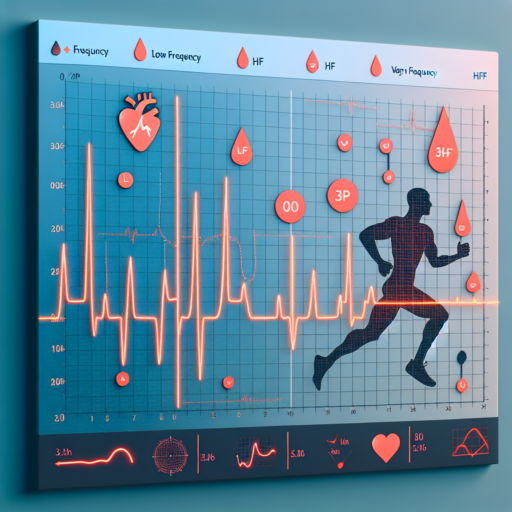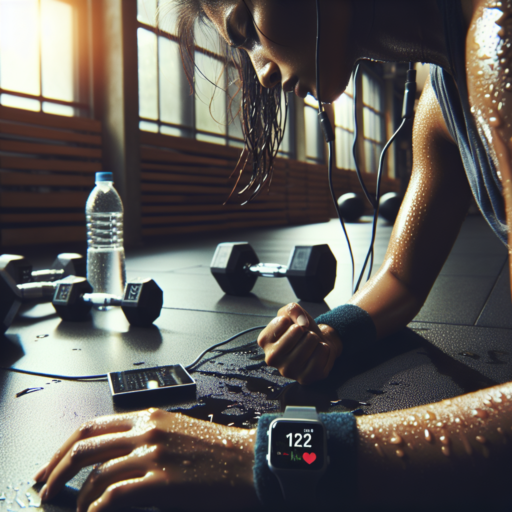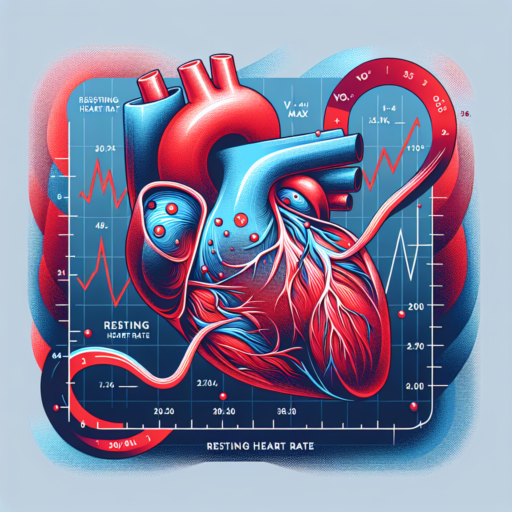Understanding the HRV Index in Coros Watches
The Heart Rate Variability (HRV) Index provided by Coros watches offers insightful data into your overall well-being and fitness level. This index measures the variation in time intervals between heartbeats, which can be an indicator of your autonomic nervous system’s efficiency. High variability suggests a healthy, responsive system, whereas lower scores may indicate stress, fatigue, or even overtraining.
Coros watches utilize advanced sensors to track your HRV, providing a detailed view of how your heart rate varies with each beat. This information is crucial for athletes and fitness enthusiasts who aim to optimize their training and recovery. By understanding the fluctuations in your HRV Index, you can adjust your workout intensity, improve your sleep quality, and manage stress more effectively.
To get the most out of the HRV Index on your Coros watch, it’s essential to monitor your scores regularly. Consistent tracking can help you identify patterns and trends that affect your heart rate variability. This might include how different types of workouts, stress levels, and even diet can influence your HRV. Armed with this knowledge, you can make informed decisions to enhance your health and performance.
How to Use HRV Index on Your Coros to Improve Training
Understanding and utilizing the Heart Rate Variability (HRV) index on your Coros watch can be a game-changer in optimizing your training regimen. The HRV Index is a potent metric that reflects your body’s readiness to perform and can help in tailoring your training intensity and recovery periods for maximum effectiveness. By closely monitoring your HRV Index, you can make more informed decisions about when to push your limits and when to take a step back for recovery.
Monitoring Your Daily HRV
Begin by regularly checking your HRV index each morning upon waking. This practice will establish a baseline HRV that reflects your body’s average readiness. Note that daily fluctuations are normal but look for significant trends over time. A decreasing HRV trend may suggest a need for more rest, whereas an increasing trend indicates improving fitness and recovery status. Coros devices simplify this process by automatically tracking and providing easy access to your HRV data.
Adjusting Training Intensity
Paying attention to sudden changes in your HRV Index on your Coros can be crucial for preventing overtraining and injury. On days when your HRV indicates lower readiness, consider reducing your training intensity or opting for a rest day. Conversely, when your HRV is higher than usual, it may be the ideal time to tackle more strenuous workouts or push your limits. This strategic approach ensures that you’re training at the optimum level according to your body’s current capacity.
Implementing HRV-guided training modifications can not only help in preventing potential overtraining but also in accelerating performance improvements. By aligning your training efforts with your body’s inherent readiness signals, you fully harness the power of personalized training. Embrace the insight provided by the HRV Index on your Coros, and refine your approach to training to achieve your peak performance.
The Benefits of Monitoring HRV Index with Coros Devices
Monitoring your Heart Rate Variability (HRV) has emerged as a crucial aspect of understanding overall wellbeing and fitness levels. The Coros line of devices offers advanced HRV tracking features, providing individuals with deep insights into their body’s responses to stress, training, and recovery. By leveraging these insights, users can optimize their fitness routines, improve recovery, and enhance overall health.
Optimize Training and Recovery
One of the key benefits of monitoring HRV index with Coros devices is the ability to finely tune your training and recovery processes. HRV readings can help identify when your body is in a state of stress or when it is fully recovered and ready for another round of intense training. This insight allows for a more personalized and effective approach to fitness, ensuring you’re not overtraining or under-recovering, which could lead to injury or burnout.
Enhance Your Lifestyle Choices
Aside from training optimization, tracking HRV with Coros devices sheds light on how different aspects of your lifestyle impact your body. Factors such as diet, sleep quality, hydration levels, and stress management have significant effects on your HRV scores. By understanding these relationships, you can make informed decisions to adjust your lifestyle habits for the better, leading to improved wellbeing and performance.
Step-by-Step Guide to Accessing HRV Index on Coros Watches
Understanding your Heart Rate Variability (HRV) is key to assessing your body’s fitness and stress levels, and Coros Watches offer this feature with precision. If you’re new to using a Coros watch or need a refresher, this guide will walk you through how to access your HRV index seamlessly. By monitoring your HRV, you can make more informed decisions about your training and recovery needs.
Getting Started with Your Coros Watch
First, ensure that your Coros watch is fully charged and properly synced with the Coros app on your smartphone. This synchronization is crucial for accessing detailed analytics, including your HRV index. Navigate through the watch’s menu to find the ‘Heart Rate’ section. Here, your HRV measurements, along with daily and weekly summaries, are displayed, offering a comprehensive overview of your heart’s health and resilience.
Accessing HRV Index
To view your HRV index, select the ‘HRV’ option found under the ‘Heart Rate’ menu. Your watch will display your current HRV score, typically measured in milliseconds (ms). This figure represents the variation in time between your heartbeats, with a higher HRV indicating better cardiovascular fitness and resilience to stress. It is advisable to measure your HRV in a consistent setting, preferably in the morning upon waking, to ensure accuracy.
Understanding and tracking your HRV index on your Coros watch can be a potent tool in optimizing your training regime and enhancing overall wellness. Regular monitoring allows you to notice trends over time, helping you to identify when your body is under more stress than usual or recovering optimally. Remember, the key to using your Coros watch effectively is consistency in measurement and interpretation of data.
Comparing HRV Index on Coros With Other Fitness Trackers
When evaluating the effectiveness and sophistication of fitness trackers, especially in terms of heart rate variability (HRV) monitoring, Coros emerges as a notable contender. HRV measurement, considered an essential metric for understanding overall heart health and stress levels, is a feature where Coros has invested significant research and development. This effort positions Coros alongside, if not ahead of, its competitors in providing users with accurate and actionable health data.
Comparing the HRV index on Coros with other fitness trackers involves examining both the precision of the measurements and the user interface through which these statistics are presented. Many users have reported that Coros offers a more intuitive analysis of HRV data, allowing for a better understanding of what the numbers actually mean in the context of their health and fitness goals. This contrasts with some other trackers that may provide the data but with little to no interpretation, leaving users puzzled about the implications.
Another aspect under scrutiny is how frequently HRV measurements are taken. Coros shines in offering real-time HRV tracking, a functionality not universally available across all fitness trackers. The ability to monitor changes in HRV instantly provides users with immediate feedback on their stress levels and recovery state, which is invaluable for optimizing performance and health. This real-time feature, combined with Coros’s proprietary algorithm for HRV analysis, presents a compelling case for its superiority in this specific metric.
No se han encontrado productos.
Optimizing Your Workout Using HRV Index Data from Coros
Understanding and utilizing HRV (Heart Rate Variability) index data can significantly enhance the effectiveness of your workout routines. Coros provides cutting-edge technology that enables athletes and fitness enthusiasts to harness this valuable data. The HRV index, measured by Coros devices, offers insights into your body’s readiness to perform and recover, making it a crucial tool for optimizing your training sessions.
Integrating HRV data from Coros into your workout regimen allows for personalized and adaptive training plans. This data is not just a measure of heart rate but an indicator of the balance between the sympathetic and parasympathetic nervous systems. By analyzing HRV, you can determine the best times to push your limits and when to prioritize recovery, thereby avoiding overtraining and potential injury.
Coros gadgets stand out in the fitness technology space due to their precision and reliability in tracking HRV. Leveraging this data can help in fine-tuning your workouts, ensuring that each session is in line with your body’s current capacity and recovery state. It empowers you to make informed decisions about the intensity and duration of your exercises, aligning them closely with your fitness goals and capabilities.
What Does Your HRV Index Mean for Your Health and Fitness?
Understanding your HRV (Heart Rate Variability) index is integral in gauging your overall health and fitness levels. HRV measures the variation in time between each heartbeat, a critical indicator of your autonomic nervous system’s balance. This metric is not just a number but a comprehensive reflection of your physical and mental well-being. High HRV numbers often suggest a resilient and strong cardiovascular system, while lower HRV values could indicate stress, fatigue, or underlying health issues. This understanding helps individuals tailor their fitness and wellness strategies for improved health outcomes.
The Impact of High HRV on Health and Fitness
Individuals with a higher HRV index are typically seen to have a cardiovascular system that efficiently manages stress and recovers from exercise. This resilience translates to a better fitness level, allowing for more intense and frequent workouts. High HRV is also associated with reduced stress levels, better sleep quality, and an improved ability to focus. Essentially, a higher HRV is indicative of a body that’s not only physically fit but also adept at managing the various stressors life throws its way.
Understanding Low HRV and Its Implications
On the flip side, a low HRV is a warning sign that should not be ignored. It often highlights the need for recuperation, indicating that your body is facing challenges in recovering from stress or physical exertion. This situation might warrant a closer look into your current lifestyle choices, such as diet, exercise, and stress management practices. Incorporating mindfulness activities, adjusting workout routines, and ensuring adequate rest are essential steps towards improving your HRV and, subsequently, your overall health and fitness.
Certainly! Focusing on the specific topic of HRV Index Tracking on Coros Devices, I’ll craft detailed SEO-friendly content under your given H2, including possible subheadings and list items for enhanced readability.
—
FAQs About HRV Index Tracking on Coros Devices
Heart Rate Variability (HRV) Index tracking on Coros devices has become a vital feature for athletes and fitness enthusiasts aiming to optimize their training and recovery. Understanding the nuances of this technology can empower users to make informed decisions about their health and fitness routines.
What is HRV and Why is it Important?
HRV measures the time variation between heartbeats, offering insights into the autonomic nervous system’s activity. A higher HRV indicates a better capacity to adapt to stress, recover, and enhance overall cardiovascular health. Coros devices leverage this metric to help users tailor their workouts, recovery periods, and manage stress effectively.
How Accurately Do Coros Devices Track HRV?
Coros devices employ advanced biometric sensors and algorithms to ensure accurate HRV tracking. While no device offers perfect accuracy compared to clinical equipment, Coros strives to provide a close approximation that is incredibly useful for personal monitoring and trend analysis, aiding users in noticing patterns and making adjustments to their routines.
Can I Improve My HRV Score Using Coros Devices?
Yes, regularly using a Coros device for HRV tracking can assist in identifying lifestyle habits and training choices that influence HRV positively or negatively. By observing HRV trends, users can modify their sleep, nutrition, hydration, and stress management practices to potentially improve their HRV score over time. Incorporating feedback from Coros devices into your daily routine could be a game-changer in achieving optimal health and fitness levels.
—
This SEO-friendly content is tailored to address common inquiries about HRV Index Tracking on Coros devices without veering off-topic, using clear H3 subheadings for better structure and readability.
Tips for Improving Your HRV Score with Coros
Improving your Heart Rate Variability (HRV) is crucial for enhancing overall heart health and athletic performance. Coros devices offer advanced analytics to help you optimize your HRV score, providing insights into your body’s recovery state and stress levels. Here are practical ways to utilize your Coros wearable to boost your HRV, ensuring you’re training efficiently and managing stress effectively.
1. Utilize Rest and Recovery Features
The first step towards improving your HRV score is to ensure that your body is getting ample rest. Coros watches come equipped with detailed sleep analysis and recovery advice features. By closely monitoring your sleep patterns and adhering to the recovery suggestions, you can enhance the quality of your rest, which is paramount for an improved HRV. These insights allow you to adjust your training and resting periods for optimal recovery and performance.
2. Analyze Stress Levels
Understanding and managing your daily stress levels can lead to a significant improvement in your HRV score. Coros watches offer stress tracking features that give you a clear picture of your stress trends throughout the day. This data is crucial for identifying patterns and implementing strategies to reduce stress, such as mindfulness exercises, breathing techniques, or adjusting your workload. By keeping your stress levels in check, you create an environment where your HRV can thrive.
3. Engage in Regular, Balanced Training
Regular, balanced training sessions are key to elevating your HRV score. Overtraining can be as detrimental as a sedentary lifestyle. Coros devices provide advanced workout analysis, which helps in maintaining the right balance between intensity and recovery. By following a consistent training regimen that includes both high-intensity and low-impact workouts, you encourage your body to adapt and improve. The analytics provided by your Coros device will be instrumental in finding the perfect balance that facilitates HRV improvement.




